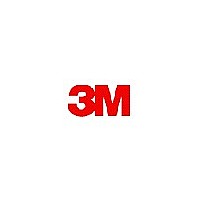8447 3M, 8447 Datasheet

8447
Manufacturer Part Number
8447
Description
FLOOR TILE COND REV BLK .125X12"
Manufacturer
3M
Series
8400r
Datasheet
1.8447.pdf
(1 pages)
Specifications of 8447
Accessory Type
Conductive Floor Tile, Black - 0.125" x 12"
Lead Free Status / RoHS Status
Vendor undefined / Vendor undefined
Other names
05113855782
84473M
98079835819
84473M
98079835819
Available stocks
Company
Part Number
Manufacturer
Quantity
Price
Part Number:
84472C
Manufacturer:
MURATA/村田
Quantity:
20 000
Part Number:
84473C
Manufacturer:
MURATA/村田
Quantity:
20 000
Part Number:
84474C
Manufacturer:
MURATA/村田
Quantity:
20 000
Fig. 5
Fig. 1
Fig. 2
Fig. 4
Fig. 6
3M 8400 Series Static-Dissipative and Conductive Floor Tile
Installation Information for Flooring Contractors
Fig. 3
Preparation
Clean floor of dust and debris. (Figure 1)
Any pieces of debris that remain on the subfloor may telegraph through the tile and be seen as
bumps on the finished surface.
Grounding Strip Installation
All of the necessary copper grounding strips should be installed prior to the application of
the conductive adhesive and tile.
D e t e rmine the proper locations for the copper grounding strips. L o c a t i o n s
should be selected along walls or at columns where there is access to a grounding point (e.g., an
electrical outlet). There must be at least one (1) grounding strip installed for every 1000 square feet
of floor area or a minimum of two (2) in any room.
Remove the paper liner from the adhesive side of the copper strip.
(CAUTION: THE EDGES OFTHE COPPER STRIPS ARE VERYSHARP.)
Apply each strip as shown (Figure 2) using the adhesive side to position about two-thirds of the
strip on the floor and the rest of the strip up the vertical wall or column.
(Figure 5).
Floor Tile Layout
Typically, floor tile is laid in sections, starting in the center of the room, marked with
chalk lines (Figure 3). The size of each section should be approximately 135 square feet to
correspond with the amount of adhesive in a gallon unit. Typical patterns are straight-line
(Figure 3) (3 ft. by 45 ft.) or pyramid-shaped (Figure 4).
Conductive Adhesive
Mix the two-part conductive epoxy adhesive per the instructions on the container. Spread
the adhesive over the first application section using a notched trowel with 1/16" square
notches on 1/16" centers. (Figure 5). The applied adhesive should sit for about 20 minutes
prior to tile installation to allow any residual solvent to “flash off.” At ground strip locations,
the adhesive should be spread directly over the copper grounding strip. Working time for the
mixed adhesive is approximately one hour; this may vary with the ambient temperature.
Tile Installation
The installer should work from the “dry” side to avoid kneeling on freshly laid tiles. If it is
necessary to work from on top of freshly laid tile, a kneeler board should be used.
Each floor tile should be "dropped" in place (do not “slide” the tiles into place) and the
tiles should be pressed firmly together. Each section of the finished floor should be rolled
with a 150-pound (75-kilogram) roller (minimum) approximately one-half hour after
installation; the goal is to have 90% minimum adhesive coverage on the backside of each
tile after rolling.
Immediately clean up any adhesive that may come up through the seams between tiles.
Use clean, warm, soapy water with a clean rag. Rinse the rag frequently during use. Any
adhesive that is not cleaned up immediately will be much more difficult to remove after it
cures.
Newly installed tile can be walked on after the adhesive has cured for 24 hours. Wait 48 hours
before allowing equipment or rolling traffic onto the tile.
Ground Strip Connection
Each copper ground strip must be attached to ground. To ground in accordance with
ANSI/ESD Association Standard S6.1, use a #14 or larger copper wire with a ring-tongue
terminal at each end. One end is connected to a grounded receptacle and the other is screwed
or crimped to the copper strip on the wall or column. (Figure 6)
The conductive adhesive and ESD floor tile will be laid directly on top of the copper strips
